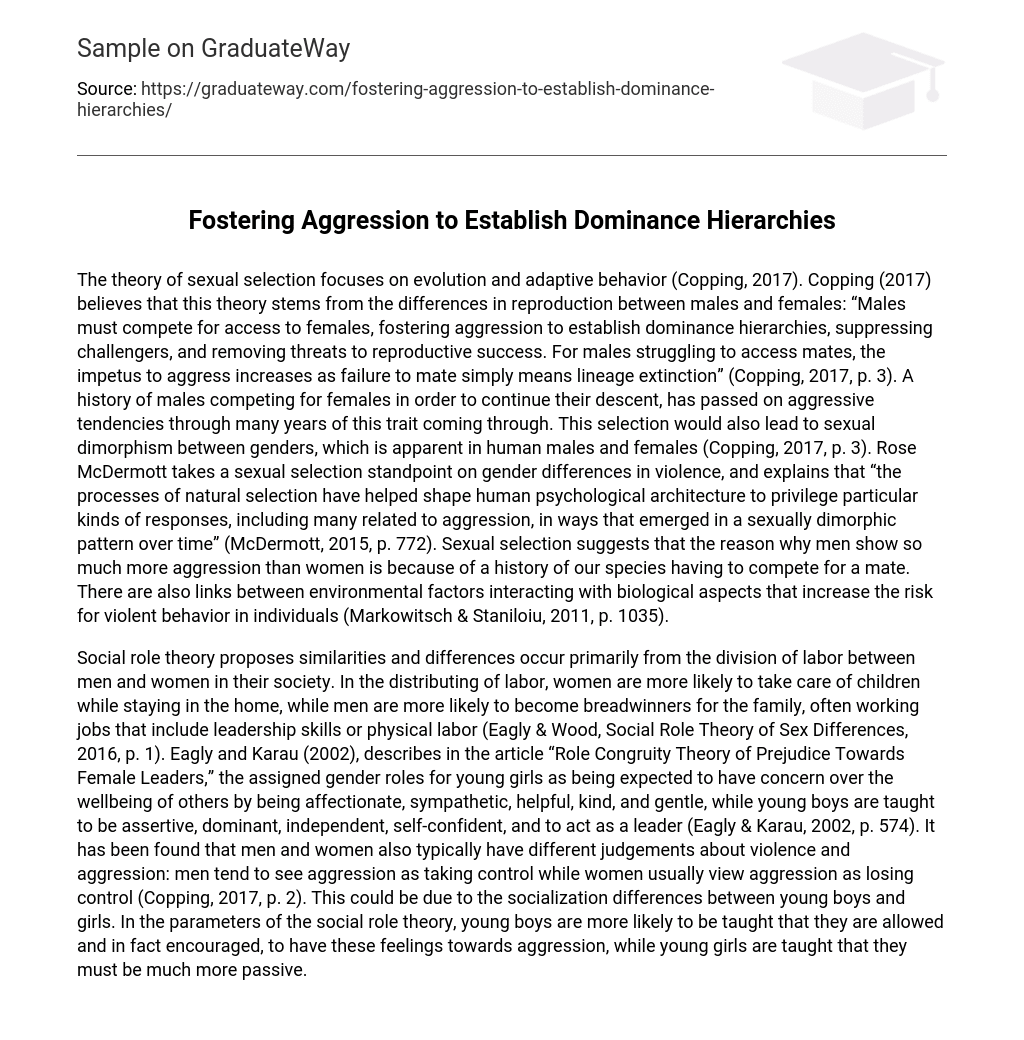The theory of sexual selection focuses on evolution and adaptive behavior (Copping, 2017). Copping (2017) believes that this theory stems from the differences in reproduction between males and females: “Males must compete for access to females, fostering aggression to establish dominance hierarchies, suppressing challengers, and removing threats to reproductive success. For males struggling to access mates, the impetus to aggress increases as failure to mate simply means lineage extinction” (Copping, 2017, p. 3). A history of males competing for females in order to continue their descent, has passed on aggressive tendencies through many years of this trait coming through. This selection would also lead to sexual dimorphism between genders, which is apparent in human males and females (Copping, 2017, p. 3). Rose McDermott takes a sexual selection standpoint on gender differences in violence, and explains that “the processes of natural selection have helped shape human psychological architecture to privilege particular kinds of responses, including many related to aggression, in ways that emerged in a sexually dimorphic pattern over time” (McDermott, 2015, p. 772). Sexual selection suggests that the reason why men show so much more aggression than women is because of a history of our species having to compete for a mate. There are also links between environmental factors interacting with biological aspects that increase the risk for violent behavior in individuals (Markowitsch & Staniloiu, 2011, p. 1035).
Social role theory proposes similarities and differences occur primarily from the division of labor between men and women in their society. In the distributing of labor, women are more likely to take care of children while staying in the home, while men are more likely to become breadwinners for the family, often working jobs that include leadership skills or physical labor (Eagly & Wood, Social Role Theory of Sex Differences, 2016, p. 1). Eagly and Karau (2002), describes in the article “Role Congruity Theory of Prejudice Towards Female Leaders,” the assigned gender roles for young girls as being expected to have concern over the wellbeing of others by being affectionate, sympathetic, helpful, kind, and gentle, while young boys are taught to be assertive, dominant, independent, self-confident, and to act as a leader (Eagly & Karau, 2002, p. 574). It has been found that men and women also typically have different judgements about violence and aggression: men tend to see aggression as taking control while women usually view aggression as losing control (Copping, 2017, p. 2). This could be due to the socialization differences between young boys and girls. In the parameters of the social role theory, young boys are more likely to be taught that they are allowed and in fact encouraged, to have these feelings towards aggression, while young girls are taught that they must be much more passive.





